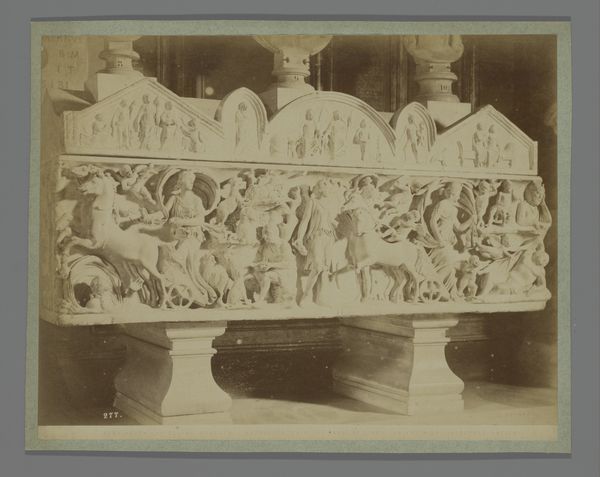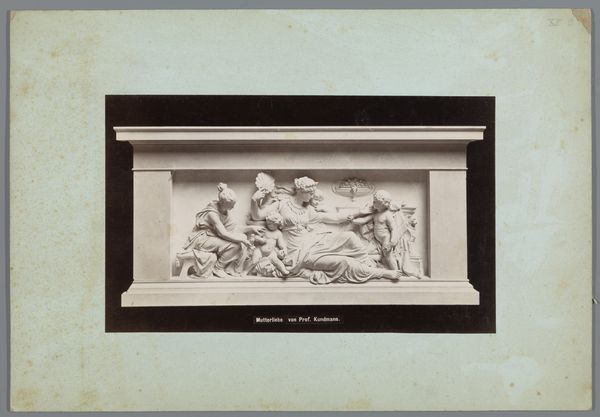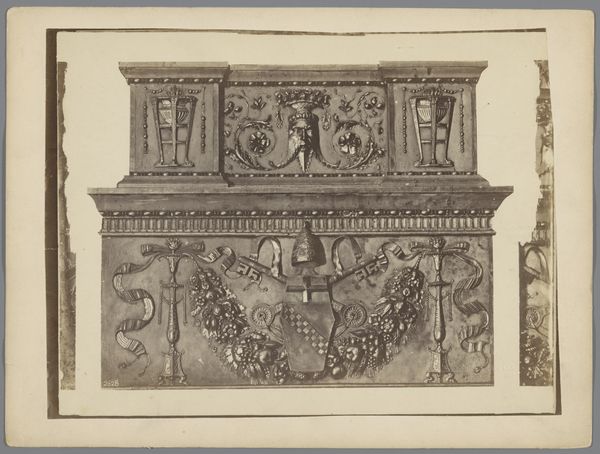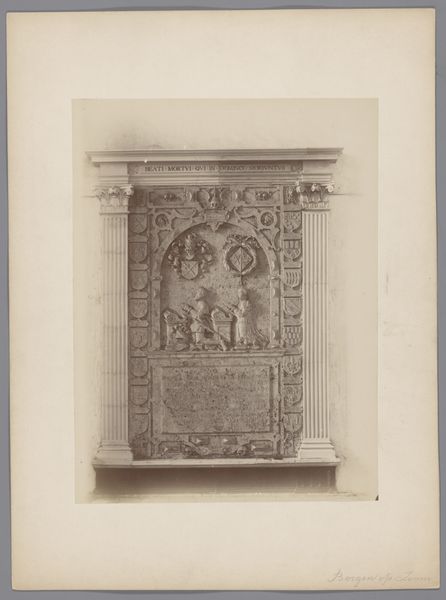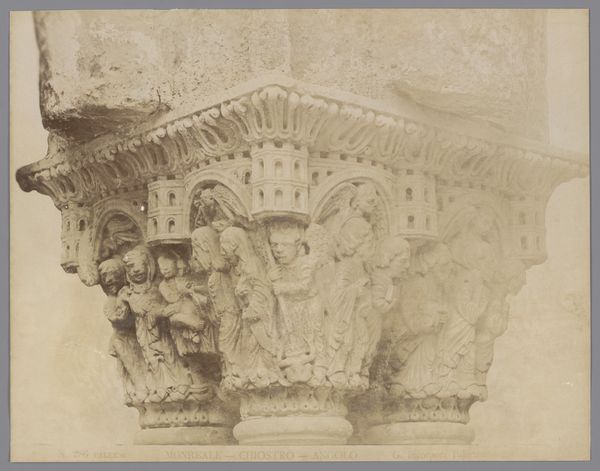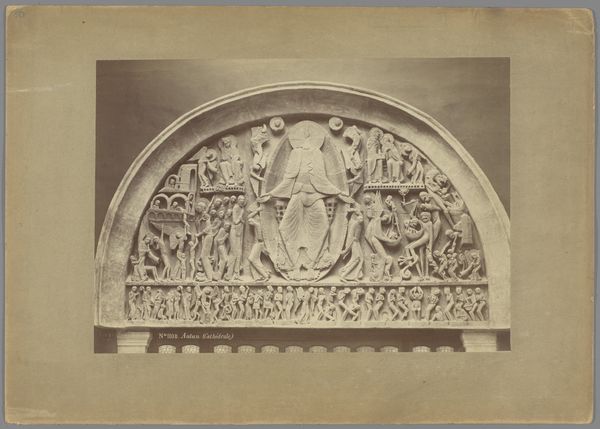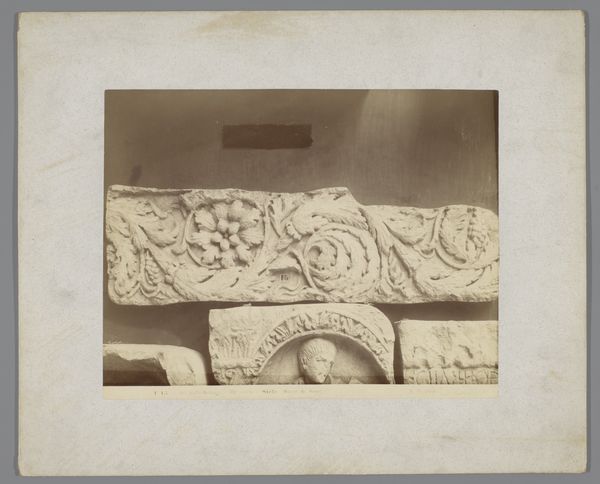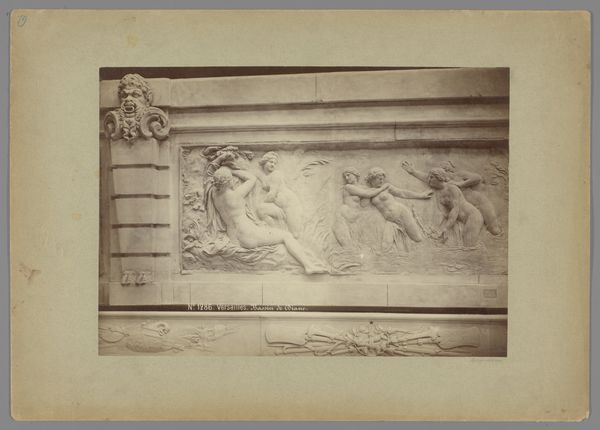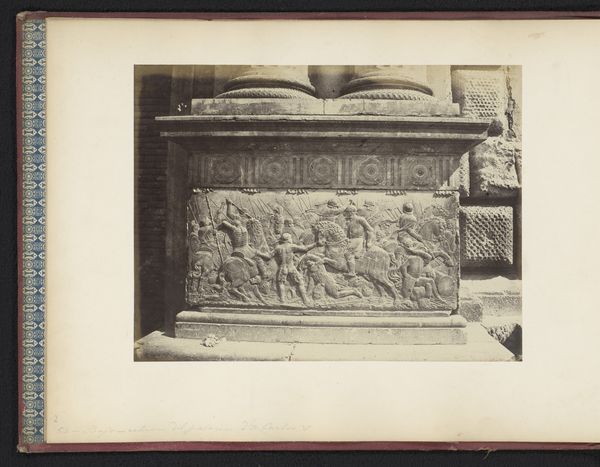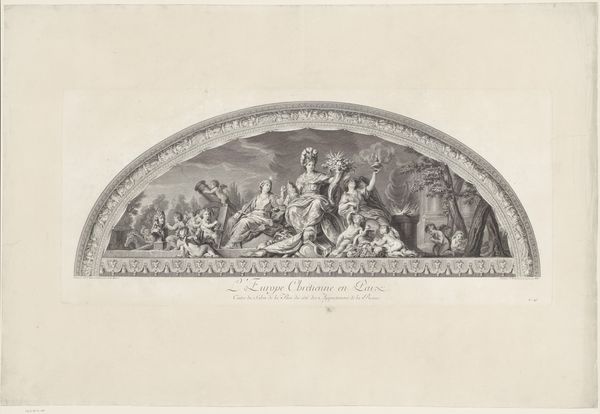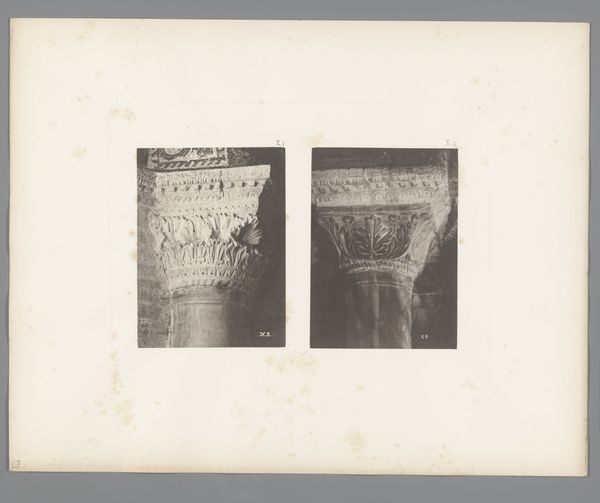
Antieke sarcofaag met voorstelling van een bacchanaal, Museo Vaticano c. 1850 - 1870
0:00
0:00
relief, photography, marble
#
portrait
#
greek-and-roman-art
#
relief
#
figuration
#
photography
#
ancient-mediterranean
#
history-painting
#
marble
Dimensions: height 245 mm, width 356 mm
Copyright: Rijks Museum: Open Domain
Editor: We’re looking at a photograph of an antique sarcophagus with a bacchanaal scene, taken between 1850 and 1870 by Libreria Spithöver, housed in the Museo Vaticano. The relief carved into the marble depicts a frenzied scene. It’s quite dynamic, all the figures seem to be in motion. How do you read the composition of this relief? Curator: The photograph captures a marble relief depicting a Bacchic procession. What’s compelling here is the visual rhythm. Notice the interplay between the figures – how their poses create a sinuous line, leading the eye across the surface? Observe how the sculptor employs varied depths of relief, producing an intricate layering of forms. It's almost as though one plane is sitting on top of the other, giving an overwhelming sense of depth despite the limited surface area. Editor: The way the figures overlap does create a sense of depth. Are there specific techniques used in the carving that you find particularly interesting? Curator: Yes, the formal organization allows for careful decoding of these planes of forms. Study the use of drapery. Note how the folds articulate the figures’ forms. Look at the contrast of the textured hair against the smooth skin, the chiseling defining muscularity and musculature. The whole form speaks to a formal celebration of shape and balance, not narrative content. Do you see how the visual interest is derived from its own internal structural logic? Editor: I see what you mean. Looking at it as a purely visual object helps me appreciate the skill involved in creating it, setting aside its original context. Curator: Precisely. By attending to the formal elements – line, shape, texture, and composition – we gain a deeper insight into its intrinsic qualities, independent of subject matter or history. Editor: It is really insightful how breaking it down to the basics gives a new understanding to this relief. Curator: Indeed, focusing on those intrinsic elements enables us to appreciate not just what it depicts, but how it visually impacts the viewer.
Comments
No comments
Be the first to comment and join the conversation on the ultimate creative platform.
